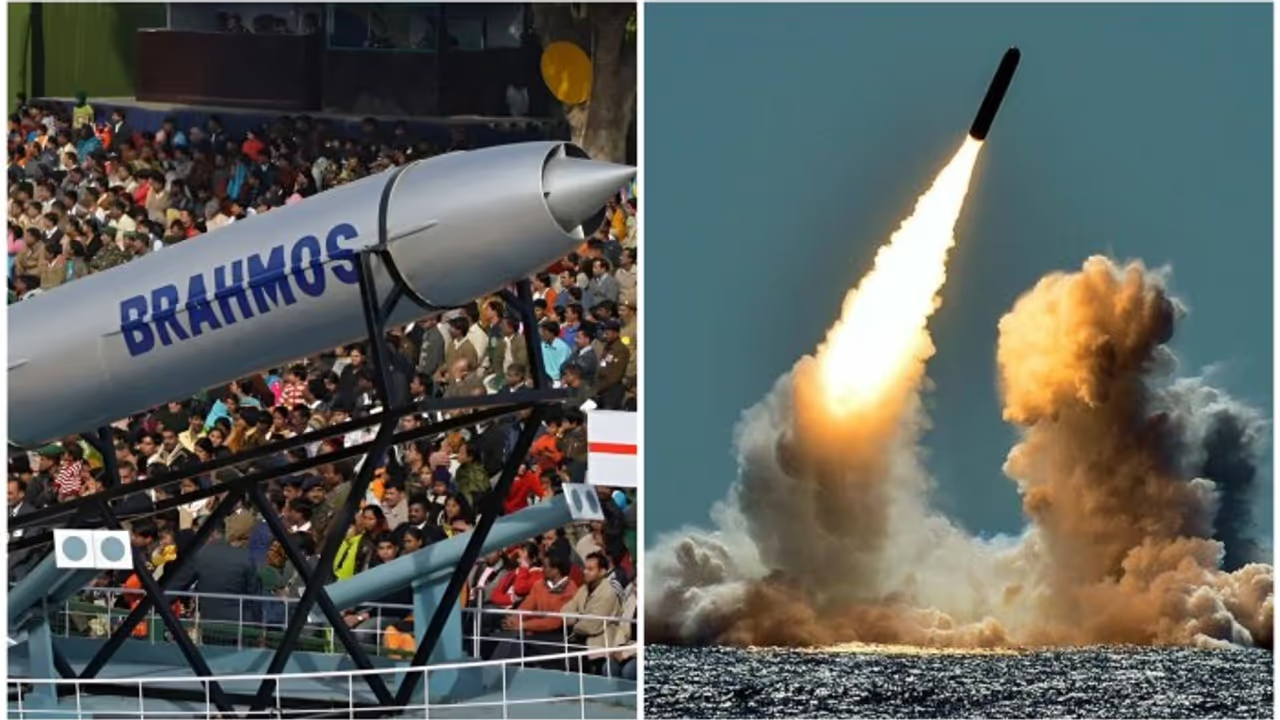India's prominent missile systems, BrahMos and the K-6, are built for entirely different purposes, operate in distinct domains, and play unique roles in India’s defence strategy.
India’s defence capabilities have grown remarkably, reflecting the nation’s focus on self-reliance and strategic strength. Two of its prominent missile systems, the BrahMos and the K-6, often attract attention. However, comparing these missiles is misleading and unfair. They are built for entirely different purposes, operate in distinct domains, and play unique roles in India’s defence strategy. This article explains why equating BrahMos with K-6 is a mistake and emphasizes the need to value each missile for its own strengths.

The BrahMos missile is a source of pride for every Indian. It is a supersonic cruise missile, developed jointly by India and Russia, renowned for its incredible speed of up to Mach 3 (approximately 3,700 km/h). BrahMos is versatile, capable of being launched from land, sea, air, and submarines. Its specifications include a length of 8.4 meters, a diameter of 0.6 meters, a weight of around 2,500 kg (air-launched variant 2,200 kg), and a warhead of 200-300 kg (conventional). With a range extended from 290 km to about 800 km, it delivers pinpoint accuracy. Its primary role is to strike high-value targets like enemy ships, command centres, or key infrastructure. Whether targeting a warship in the Arabian Sea or a terrorist hideout, BrahMos is a tactical weapon for quick, devastating strikes. Its low-altitude flight, radar evasion, and heavy warhead make it a game-changer in modern warfare.
In contrast, the K-6 missile is a different kind of weapon. It is a submarine-launched ballistic missile (SLBM), under development by India’s Defence Research and Development Organisation (DRDO). Unlike BrahMos, a cruise missile, the K-6 is a strategic weapon designed for long-range, high-impact strikes. It boasts a reported range of up to 8,000 km and a hypersonic speed of Mach 7.5 (approximately 9,250 km/h). Its specifications, though not fully public due to its developmental stage, include an estimated length of 12-14 meters, a diameter of around 1.5 meters, and the ability to carry multiple warheads (1,500-2,000 kg payload) using Multiple Independently Targetable Reentry Vehicle (MIRV) technology. The K-6 is meant for India’s nuclear triad—land, air, and sea-based nuclear capabilities—ensuring a credible second-strike capability. Deployed on S-5 class nuclear submarines, it allows strikes from deep under the ocean, beyond enemy reach.
Comparing BrahMos and K-6 is like comparing sniper rifle to long-range artillery gun
Comparing BrahMos and K-6 is like comparing a sniper rifle to a long-range artillery gun. A sniper rifle is precise and fast for specific targets, much like BrahMos. An artillery gun is built for massive, long-distance destruction, similar to the K-6. BrahMos operates in the tactical domain, focusing on immediate battlefield objectives like neutralising enemy warships or terrorist camps in a regional theatre. The K-6 is a strategic asset, designed to deter global powers and ensure India’s survival in a nuclear conflict. While BrahMos wins battles, K-6 prevents wars through the threat of overwhelming retaliation.
Their technology and flight profiles further highlight their differences. BrahMos, a cruise missile, flies at a constant Mach 3 speed, skimming terrain or sea to avoid detection. It uses a ramjet engine for sustained supersonic flight and follows a pre-programmed path. The K-6, a ballistic missile, follows a parabolic trajectory, launching into the upper atmosphere and re-entering to deliver warheads. Its Mach 7.5 speed and MIRV capability make it nearly uninterceptable, but it prioritizes massive payload delivery over vast distances, not tactical precision.
The comparison also ignores their operational contexts. BrahMos is battle-tested, operational with the Indian Army, Navy, and Air Force, and exported to countries like the Philippines. Its Mach 3 speed and proven accuracy make it one of the world’s deadliest cruise missiles. The K-6, still in development, with testing and induction years away, is a future-focused project. Its Mach 7.5 potential is promising, but unproven. Comparing a mature system with a developing one is unfair.
Geopolitically, the missiles serve distinct purposes. BrahMos, with its 800 km range and Mach 3 speed, strengthens India’s dominance in the Indo-Pacific, countering regional threats like China’s naval expansion or Pakistan’s military posturing. The K-6, with its 8,000 km range and Mach 7.5 capability, is a global deterrent, targeting major powers like China with advanced ballistic missile systems. Deployed on submarines, it projects power worldwide, a role BrahMos was never designed for.
The urge to compare BrahMos and K-6 often arises from misunderstanding their roles or a desire to rank India’s missiles. This does a disservice to both. BrahMos is unmatched as a Mach 3 supersonic cruise missile for tactical missions. The K-6, when operational, will place India among elite nations with Mach 7.5 SLBM capabilities, bolstering nuclear deterrence. They are not competitors but complementary, addressing different security challenges.
In conclusion, comparing BrahMos with K-6 is flawed, ignoring their distinct purposes, technologies, and roles. BrahMos, with its Mach 3 speed and 800 km range, is India’s sword, swift and precise for regional conflicts. The K-6, with Mach 7.5 and 8,000 km range, is India’s shield, a long-range deterrent for existential threats. Rather than pitting them against each other, we should celebrate both as pillars of India’s defence. Each missile, in its own way, ensures India’s security and global standing, unique and indispensable.
(Girish Linganna is an award-winning science communicator and a Defence, Aerospace & Geopolitical Analyst. He is the Managing Director of ADD Engineering Components India Pvt. Ltd., a subsidiary of ADD Engineering GmbH, Germany. Contact: girishlinganna@gmail.com )
Disclaimer: The opinions expressed are solely those of the author and do not reflect the views or stance of the organization. The organization assumes no responsibility for the content shared.


